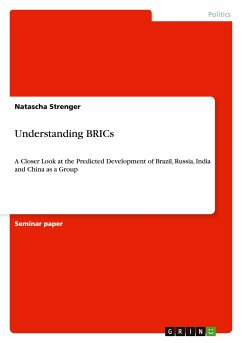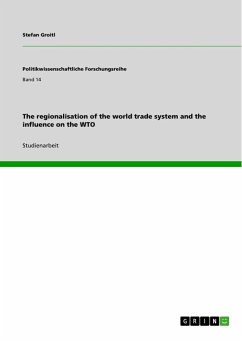Seminar paper from the year 2011 in the subject Politics - Political Systems - General and Comparisons, grade: 1,3, Ruhr-University of Bochum (Fakultät für Sozialwissenschaften), course: Emerging Powers in International Affairs, language: English, abstract: About ten years ago, Jim O'Neil at the well-known investment bank Goldman Sachs coined the acronym BRIC for four emerging countries that were regarded to have a common potential of shaping global markets in the not-too-distant future: Brazil, Russia, India and China. In 2003, Goldman Sachs published a report named "Dreaming with BRICs: The Path to 2050". Its key message was that the economies of these four countries together, which at that time made up only 15% of the global economy, could by 2050 be larger than those of the (former) G6. They claimed that, given that their predictions come true, the list of the world's major economies could look very different from today's in less than 40 years - a perspective which must naturally have an influence on investing behavior around the globe (see Wilson, Purushotaman 2003). The reasons for these expectations were the BRICs economic growth rates, which topped those of the industrialized nations by far, as well as their huge share of global population which promised emerging masses of consumers.In 2010, Goldman Sachs could proudly announce the fulfillment of their 2001 predictions (Wilson et al.). The past decade had indeed seen a rise in political and economic power of these emerging countries, so, according to Goldman Sachs, there were no reasons to doubt that the BRICs future growth would as well be satisfying their forecasts (ibid. 2). Another report from December 2009, which concentrated on the BRICs' survival of the global financial crisis had even confirmed that these countries (with the sole exception of Russia) were emerging healthier from it than the industrialized world - a development which gave reason to expect yet better long-term performance than they had originally prophesized ten years ago (O'Neill, Stupnytska).However, critics argue that the entire concept of BRIC has flaws - it might appear forced to group four countries that seem to have very little in common. The prediction of their future role in global affairs seems rather bold and even if in terms of economics the BRICs fulfill the expectations - what does this mean for their general role in world affairs? This paper shall have a closer look at the BRIC group and its actual and predicted development. The sense of an analytical concept that was applied to four such different countries shall be examined by pointing out there commonalities and differences.








